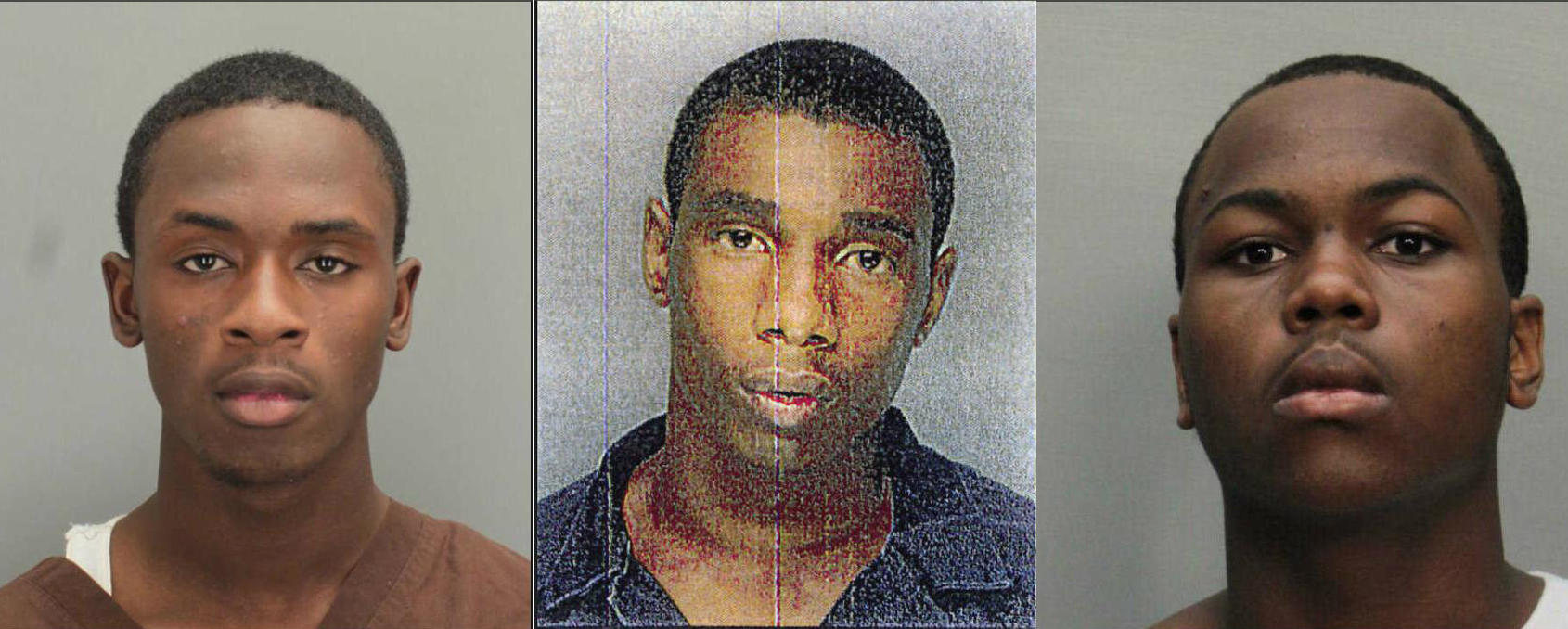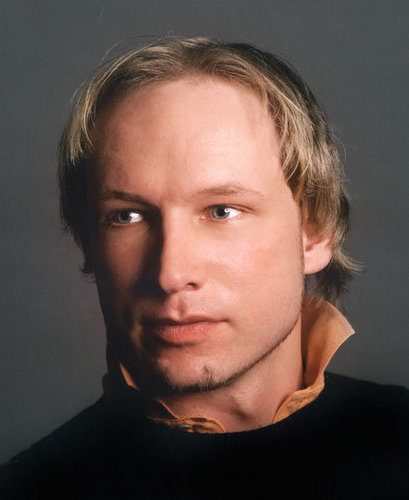
The oldest of the three, Dylan McFarlane, is 18 and is the only one who didn’t fire that night. Eric Ronald Ellington, the first to be arrested and the author of the most amazing confession the police interrogators of Miami-Dade had ever heard in all their years in their posts, is 16, the same age as his partner in crime Wayne Williams.
After stealing a van, Ellington and his two companions in fun amused themselves in a strange manner that July 25 at a Miami Gardens gas station: eleven bullets in the chest of Julian Solar, four bullets for his friend and former girlfriend, Kennia Duran.
The security videos captured the a scene as daunting as it was disconcerting: at the point of Eric Ronald Ellington’s gun, Julian opened the door of his Mustang, took several steps away from the car with his hands in the air, but even this didn’t avoid the eleven impacts Ellington directed to his chest. He died instantly.

Then came Kennia Duran’s turn: Wayne Williams’ bullets allowed them to take her to Jackson Memorial Hospital, but no further. On the last night of their lives they had lived only 23 years (him) and 24 (her).
Julian Soler (23) and Kennia Duran (24). Killed because Julian didn’t show sufficient fear when the offender pointed the gun.
Asked about the indecipherable cause of the horrendous murder, the main leader of this double play, Eric Ronald Ellingon, responded with a coldness that chilled the bones of his interrogators: “I pointed (at Soler) with the gun and looked at his eyes and he didn’t look scared enough.” Just that.
I have thought about this case, thought about the miserable existences of the mothers destroyed by fear and helplessness, after listening to why their two children rest under the earth today. Some days ago I saw Jenine Dias, Julian’s mother, and heard her say that her life is a constant effort to get through to day, to bear the terrible weight of a day without her young and loving son.
And I think, inevitably, of one of the most thorny, discussed and argued issues of our civilization: the death penalty. Obviously: because I wholeheartedly wish it upon these three miserable beings.
Opposition to capital punishment has become, suspiciously, one of the colored flags flown by modern worshipers. Today, opposing the death penalty speaks of an advanced mentality, civic, humanistic, like those who defend gays or freedom of expression. Although unlike in these latter cases, it is nothing more than a crass snobbery.
In the same way that Ortega y Gasset believed in the elevation of the average level of the masses at certain times, today it is worth asking whether there is a direct link between the scientific and technological progress of our era, and the progress of trends such as the hypocrisy and social stupidity.
Except for Belarus, all European countries have abolished the death penalty. It is the same in Oceania, and most of Latin America. Democracies such as Japan, India and the United States hold onto the maximum penalty, while dictatorships like China (where they use it routinely), North Korea, Iran and Cuba, also apply it.
This is the only point where irreconcilable and disparate societies and systems converge.

Now, as we know, scales are the universal symbol of justice. I wonder at what level if rational deformation have we come to assume as balanced, as just, a set of events such as: on one side we put the life of a human being, unmercifully destroyed by the will of a murderer, and on the other side we put fifteen, twenty years of his life that the criminal must “donate” in exchange for such an act.
For the enemies of the death penalty, for the defenders of, at most, life imprisonment, is this a fair and deserved exchange: the life of one person, for fifteen or twenty years of that of another.
Such high-minded reasoning, provisions so in tune with our civilization and morality, are what allowed the butcher Anders Bhering Breivik, who mortally shot 68 Norwegians and injured 96 others on July 22, to spend 21 years confined in a comfortable Nordic prison or, in the worst case (if his accusers manage to condemn him for Crimes Against Humanity), to theoretically lose 30 years of his existence.
In Norway, of course, the rules establish extensive privileges for prisoners of good conduct: the penalties can even be reduced by a third. From which we can conclude that Anders Bhering Breivik, citizen without even criminal fines on his record before July 22, has in his hands the possible objective of reducing by half the worse possible sentence.
This is also Justice for the advanced citizens of our time: 68 dead in exchange for, say, fifteen years of comfortable confinement. A rate of four and a half young Norwegians for each year incarcerated.
The last straw: the most violent country in the world today (second only to Afghanistan, at war), a modern record holder in terms of human atrocities, does not include the death penalty in its penal code. Mexico does not even have life imprisonment in a strict manner: just a sum of years for each conviction, which can reach 100 in theory but in practice never exceeds 25.

Yes, the country of the sickening massacres of severed heads, of the charred casinos with hundreds of people inside, is one that displays the civic flag of “No to the Death Penalty.”
Above and beyond religious arguments, which do not concern me this time (faith is not rational matter), there is an argument always put forth to declare the Death Penalty an inhumane and brutal practice: no one is born guilty. No one is born a criminal. There are different actors and social factors that cause this fatal deviation. Ergo: we must “isolate” those individuals from society, not irreparably expel them from it.
What I couldn’t find in any reference on the subject, is under what premise it is acceptable that those who are not guilty of these criminal deviations, of raping young girls, of cannibalism like Jeffry Dahmer of the Japanese Issei Sagawa (who lives peacefully today, as a celebrity, in Tokyo) must pay for the sins of alcoholic parents they don’t know, or bullies at schools they did not attend.
We should lock up these social bacteria for life, right? Very well: the 31 years that Mark David Chapman has spent in the federal prison in Attica, New York, for shooting one of the greatest geniuses of music history, have cost U.S. taxpayers about $678,900. (The approximate daily cost of an inmate in federal prison is $ 60, according to the Federal Bureau of Prisons Department of Justice). It turns my stomach thinking about it.
There is another argument to remove the death penalty from the just, and what’s more, necessary, practices: the danger of making a mistake. Too many condemned and executed have been declared innocent several years after their burials.
However, following this reasoning, it would be worthwhile to decree absolute impunity, to abolish any type of penalty for criminality, to avoid the grievous errors like those applied to the “Guildford Four” and the “Maguire Seven” who spent more than 15 years in a British prison for an IRA bombing they didn’t commit.
It’s the illogical principal of not making the pills that an incompetent doctor mis-prescribed and we wouldn’t have the death of Michael Jackson.
If Iran condemns to stoning for laughable crimes such as adultery, if North Korea took the life of an entrepreneur in 2007 in front of 150,000 people for making calls abroad; if Cuba shot three young black men for attempting to escape from the island in the small Regla ferry; and if the state of Texas in the United States accounted for several deaths that should never have been, the death penalty should also to execute the perpetrators of these “mistakes.”
When in the late 90s a couple of voodooists from Manzanillo, in the same province where I was born, tortured, dissected, and sewed shut the mouth and eyes of a child as part of a “sacred” ritual, did they deserve to be simply “isolated: from society? When a frightening character named Ted Bundy appeared in American history, proved to have slaughtered 14 women and by his own admission having raped and dismembered 28 more, what should justice do in this country? Care for his life in a distant prison?
Those who believe that life imprisonment is the real punishment for these twisted beings are wrong: human adaptive capacity is infinite. After ten or fifteen years of incarceration with no end in sight, man adapts and survives peacefully. Life is the supreme good. And life is a right to be earned, respecting that of others.
A State that applies capital punishment fairly and rigorously, not only closes ranks around its good citizens,not just those who exhibit disrespect for the grace of life as a worthy trophy; but it avoids that the just, the lacerated, those who have seen their loved ones die, take justice into their own hands.
I am sorry for the sixteen and eighteen years of age of those who killed Julian Soler and Kennia Duran in a gas station in Miami Gardens. I’m sorry because, at the end of the day their being minors may mean they will not receive lethal injections criminals could use in their forearms.
I haven’t the slightest doubt: the day on which the worst humans on this planet get what they truly deserve for their actions, we will have fewer murders, fewer terrorists, fewer dictators, fewer rapists, and perhaps the verdicts of Justice will no longer be called failures and will begin to be called successes.
September 19 2011
